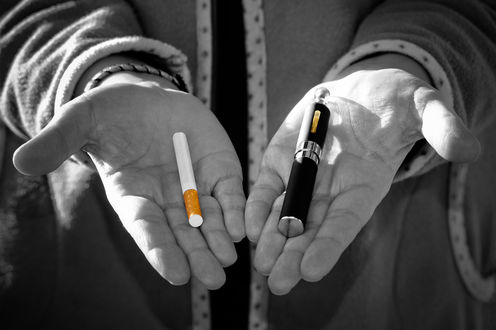But young people will do risky things. Some may smoke marijuana or cigarettes, some may get addicted to alcohol or drugs. Young people who take up vaping rather than opioids today are a lot better off than a generation ago.
Obviously no one is suggesting young people should take up vaping any more than health advocates want young people taking up energy drinks. But either of those two are superior to getting hooked on opioids, which could lead to heroin or fentanyl and serious consequences. And the 2017 Monitoring the Future (MTF) survey of eighth, 10th and 12th graders in schools nationwide shows opioid use is way down. Yes, some young people have experimented with e-cigarette type devices, but they aren't all nicotine. Some use marijuana and some use flavors. Any of those are safer than fentanyl.

The result showed 27.8 percent of high school seniors reported "vaping" once in the year prior to the survey, and the Centers for Disease Control is unlikely to push the panic button this year the way they did in previous years. When surveyed about the mist, 51.8 percent of 12th graders said, "just flavoring," 32.8 percent said "nicotine," and 11.1 percent said "marijuana" or "hash oil." The survey also asks about vaping with specific substances during the past month, with more than one in ten 12th graders saying they use nicotine, and about one in twenty reporting using marijuana in the device. So 18-year-olds are taking up vaping, but still far below historical cigarette users, which is a win for an increasingly stressed public health system.
A few of the users reported being "nicotine naive" - they were not cigarette smokers first - but too much is made of that. Again, teens experiment, they rebel, they shock. It's no reason to promote a war on vaping, which will likely only give UC San Francisco activist Stan Glantz, Ph.D., more female graduate students to sexually harass.
A bigger concern is marijuana which, like cigarettes, have numerous toxic chemicals. Use among young people has gone up 300 percent from its 1992 low point, when the Reagan administration's War on Drugs had its first graduating class. But binge drinking remains lower. Hookah popularity was much ado about nothing, since 2014 it has been on a glide path to fringe use.





Comments